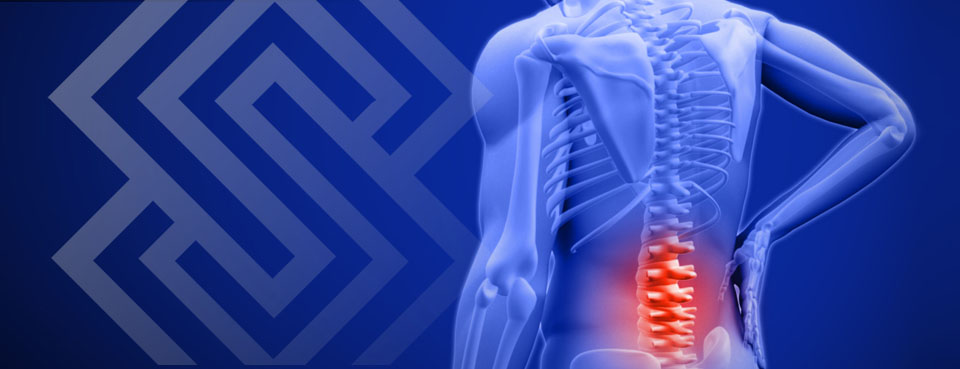Sacro-Illiac (SI) Joint Pain
Sacroiliac (SI) joint pain is a sharp, stabbing pain that emanates from your hips and pelvis, up to the lower back, and down to the thighs. Sometimes it may feel numb or tingly, or as if your legs are about to give way.The SI joint is the actual cause of chronic lower back pain in 15 to 30 percent of patients. The vast majority of adults will experience lower back pain during their lives.
What Are Sacro-Illiac (SI) Joints?
Your SI joints are located in where your sacrum and ilium meet. The sacrum is the triangle-shaped bone near the bottom of the spine, just above the coccyx / tailbone. The ilium, one of the three bones that make up hip bones, is the uppermost point of a pelvis.
The bones of the SI joints are jagged. These jagged edges help them stay aligned. Spaces between the bones of the SI joints are filled with fluid, providing lubrication for movement. These spaces are also filled with nerve endings and when the bones in the SI joint are out of alignment, it can cause pain.
The bones in the SI joints are connected by muscles and ligaments which add stability and allow for movement to remain upright and for women to deliver children.
Sacro-Illiac (SI) Joint Pain Causes
Inflammation of one or both SI joints is called sacroiliitis and may be caused by SI joint dysfunction. SI joint dysfunction is a general term that encompasses a number of conditions including:• Osteoarthritis
Prolonged stress from aging can eventually wear down the cartilage and lead to osteoarthritis.
• Ankylosing Spondylitis
Ankylosing Spondylitis is inflammatory arthritis that affects the vertebrae and joints of the spine. Severe cases of Ankylosing Spondylitis can cause pain as well as new bone growth that fuses the joints in the spine.
Although Ankylosing Spondylitis primarily affects SI joints, it can also cause inflammation in other joints and rarely in other organs and the eyes. Ankylosing Spondylitis is a chronic disease. It may cause intermittent episodes of moderate pain or even severe ongoing pain. This disease is diagnosed more frequently in young men than women.
• Injury
SI joints can be injured by trauma, such as injuries resulting from falls and car accidents.
• Pregnancy
Relaxin, a hormone released during pregnancy, makes the SI joints more elastic. This enables the pelvis to widen to accommodate the birth of a baby. It also makes the joints less stable. The associated weight gains and the additional weight of the baby on the pelvis often leads to SI joint pain. Women who experience this are more prone to experiencing arthritis in the SI joints, a risk that increases with each subsequent pregnancy.
• Abnormal Walking Patterns
Walking abnormally may be a cause of SI joint dysfunction. Walking abnormally due to issues such as having one leg shorter than the other or favoring one leg due to chronic pain. Correcting these problems may resolve your SI joint pain. Some women may walk abnormally while they’re pregnant. Once they give birth and resume walking normally their SI joint pain usually resolves.
Sacro-Illiac (SI) Joint Pain Symptoms
SI joint disorder symptoms can present differently in individuals. Common symptoms include:• Lower back pain.
• Buttock, hip and pelvis pain.
• Pain in the groin.
• Pain occurring in only one of SI joint.
• Increased pain when standing up from a sitting position.
• Stiffness or a burning sensations in the pelvis.
• Numbness.
• Weakness.
• Pain radiating down into the thighs and upper legs.
• Sensation that your legs may give way.
Notice:
This advertisement has been provided for informational purposes only and should not be used as a substitute for medical treatment or an actual diagnosis. If you are experiencing pain that may be associated with back or neck disorders you should seek the care of a doctor as soon as possible or immediately if your symptoms are accompanied by incontinence / loss of bladder or bowel control, as these may be signs of life threatening condition.

